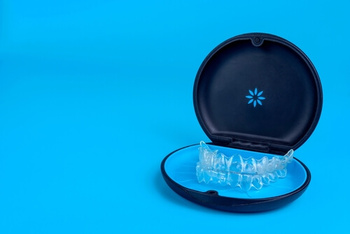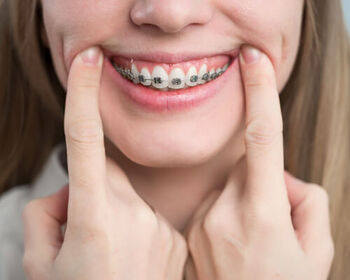You’re not alone if you’ve ever felt self-conscious about your smile or found it hard to clean between overlapping teeth. Crooked teeth are a common concern; fortunately, orthodontic treatment can help. Braces on crooked teeth remain one of the most effective ways to straighten your smile, improve your bite, and boost your confidence.
In this guide, we’ll explain how braces work, the types available, and what to expect during your treatment.
What Causes Crooked Teeth in the First Place?
 There are many reasons why teeth don’t come in straight. Genetics is a big one; if your parents had crowded teeth, chances are you might too. Other factors include:
There are many reasons why teeth don’t come in straight. Genetics is a big one; if your parents had crowded teeth, chances are you might too. Other factors include:
- Thumb sucking or prolonged dummy use during early childhood
- Mouth breathing or improper tongue posture
- Early or late loss of baby teeth
- Jaw development issues or injury
- Overcrowding, where there’s simply not enough room for all your teeth
The result? Misaligned teeth, crowded teeth, or bite problems like overbite or underbite.
Why Fixing Crooked Teeth Is More Than Just Cosmetic
While it’s easy to think of crooked teeth as just a cosmetic issue, the benefits of correcting them go far beyond appearance.
- Improved oral hygiene: Straight teeth are easier to clean, reducing your risk of tooth decay and gum disease.
- Better bite function: Proper alignment helps distribute chewing forces evenly and prevents jaw strain.
- Reduced wear and tear: Misaligned teeth can cause uneven wear on tooth surfaces.
- Boost in confidence: A straighter smile often brings a noticeable change in self-esteem.
How Do Braces Work to Straighten Crooked Teeth?
Braces apply constant pressure over time to gradually move teeth into their ideal positions. They consist of brackets (which are bonded to each tooth), wires, and sometimes elastic bands to help guide movement.
Your dentist closely monitors this process and adjusts your treatment plan as your teeth shift.
Different Types of Braces: Which One’s Right for You?
There’s no one-size-fits-all solution. Depending on your preferences, lifestyle, and the severity of misalignment, your dentist may recommend one of the following:
1. Traditional Metal Braces
These are the most common and often the most effective, especially in severe cases. They use metal brackets and wires and are suitable for both teens and adults. While noticeable, today’s designs are smaller and more comfortable than ever before.
2. Ceramic Braces
Ceramic braces work the same way as metal braces but use tooth-coloured or clear ceramic brackets to blend in with your teeth. They’re less noticeable, making them a popular choice for adult braces, though they may require more care to avoid staining.
3. Lingual Braces
These are hidden behind the teeth, making them practically invisible. They’re a great option for people concerned about appearance, but they may take a little longer to get used to and are usually more costly.
 4. Self-Ligating Braces
4. Self-Ligating Braces
Unlike traditional braces that use elastic bands, these use a special clip to hold the wire in place. They may result in faster treatment and less pressure on the teeth.
5. Clear Aligners (e.g., Invisalign and other brands)
Clear aligners might be the solution if you’re looking for a more discreet option. These are removable plastic trays that gradually move your teeth. They’re popular with adults and teens alike and can treat most cases of misalignment, though severe issues may still require fixed braces.
What Happens During Orthodontic Treatment?
Starting treatment to straighten crooked teeth can feel like a big step, but understanding what’s involved can make the process much smoother. Here’s a simple breakdown of what typically happens from your first consultation to the final result.
Your First Appointment
Your dentist will examine your teeth, take X-rays, and develop a personalised treatment plan. They’ll discuss the best type of braces for your needs and give you a timeline for your journey.
The Fitting
Brackets are bonded to your teeth, wires are inserted, and any additional components, such as elastic bands, are added. This process is usually comfortable.
Adjustments
On average, you’ll need to wear braces for 12 to 24 months, depending on the complexity. Regular visits (every 4–8 weeks) are required to adjust your braces and monitor progress.
Retention
You’ll wear a retainer once the braces come off to keep your teeth in their new positions. Skipping this step can cause them to move back.
 Tips to Make Life with Braces Easier
Tips to Make Life with Braces Easier
- Avoid certain foods: Sticky, hard, or chewy foods can damage brackets and wires.
- Brush and floss carefully: Keeping your teeth clean is crucial. Use interdental brushes or water flossers to clean between brackets.
- Wear your rubber bands (if prescribed): These help align your bite. Skipping them can delay your treatment.
- Expect some discomfort: You may feel tightness or soreness after adjustments, but it usually fades in a day or two.
- Stick to your appointments: Missing check-ups can set your progress back.
Are Braces Suitable for Adults?
Absolutely. Adult braces are increasingly common, and modern options like ceramic braces, lingual braces, and invisible aligners make them more appealing than ever.
Adults may take a bit longer to respond to treatment due to less jaw growth, but they can still achieve excellent results.
When Should You Seek Help for Crooked Teeth?
It’s never too late (or too early) to correct crooked teeth. Children as young as seven can benefit from an orthodontic assessment to evaluate jaw development and plan early intervention if needed.
For teens and adults, if you’re unhappy with your bite or the alignment of your teeth, it’s worth speaking to a dentist. They can determine the right approach to correct crooked teeth and guide you toward your desired results.
Frequently Asked Questions
How long does it take to straighten crooked teeth with braces?
In most cases, treatment lasts between 12 to 24 months. Severe misalignment may take longer.
Can you eat normally with braces?
Yes, but you’ll need to avoid certain foods, such as popcorn, nuts, and chewy lollies, which can damage your braces.
Do braces hurt?
You might feel discomfort after adjustments, but it’s manageable. Braces apply constant pressure, not sharp pain.
Are clear aligners as effective as braces?
Yes, for mild to moderate cases. In severe cases, traditional braces may offer better control and faster alignment.
Final Thoughts: Straight Teeth, Happy Smile
Wearing braces might seem daunting at first, but the end result is well worth it. Whether you go for traditional braces, ceramic brackets, or clear aligners, the journey to straighter teeth is a step toward better oral health and greater confidence.
Remember, fixing crooked teeth is not just about looks; it’s about function, hygiene, and long-term wellness. So if you’re ready to begin your journey, book an appointment with Beyond 32 Dental today at (02) 9158 6334 and take the first step towards a more confident smile.
References
Whelan, C. (2019, May 8). What causes crooked teeth and how to straighten them. Healthline. Retrieved from https://www.healthline.com/health/dental-and-oral-health/crooked-teeth
Cleveland Clinic. (2023, January 13). Braces: Types & how they work. Retrieved from https://my.clevelandclinic.org/health/treatments/24601-teeth-braces
American Association of Orthodontists. (n.d.). Clear aligners. Retrieved from https://aaoinfo.org/treatments/aligners/


 4. Self-Ligating Braces
4. Self-Ligating Braces Tips to Make Life with Braces Easier
Tips to Make Life with Braces Easier



Recent Comments